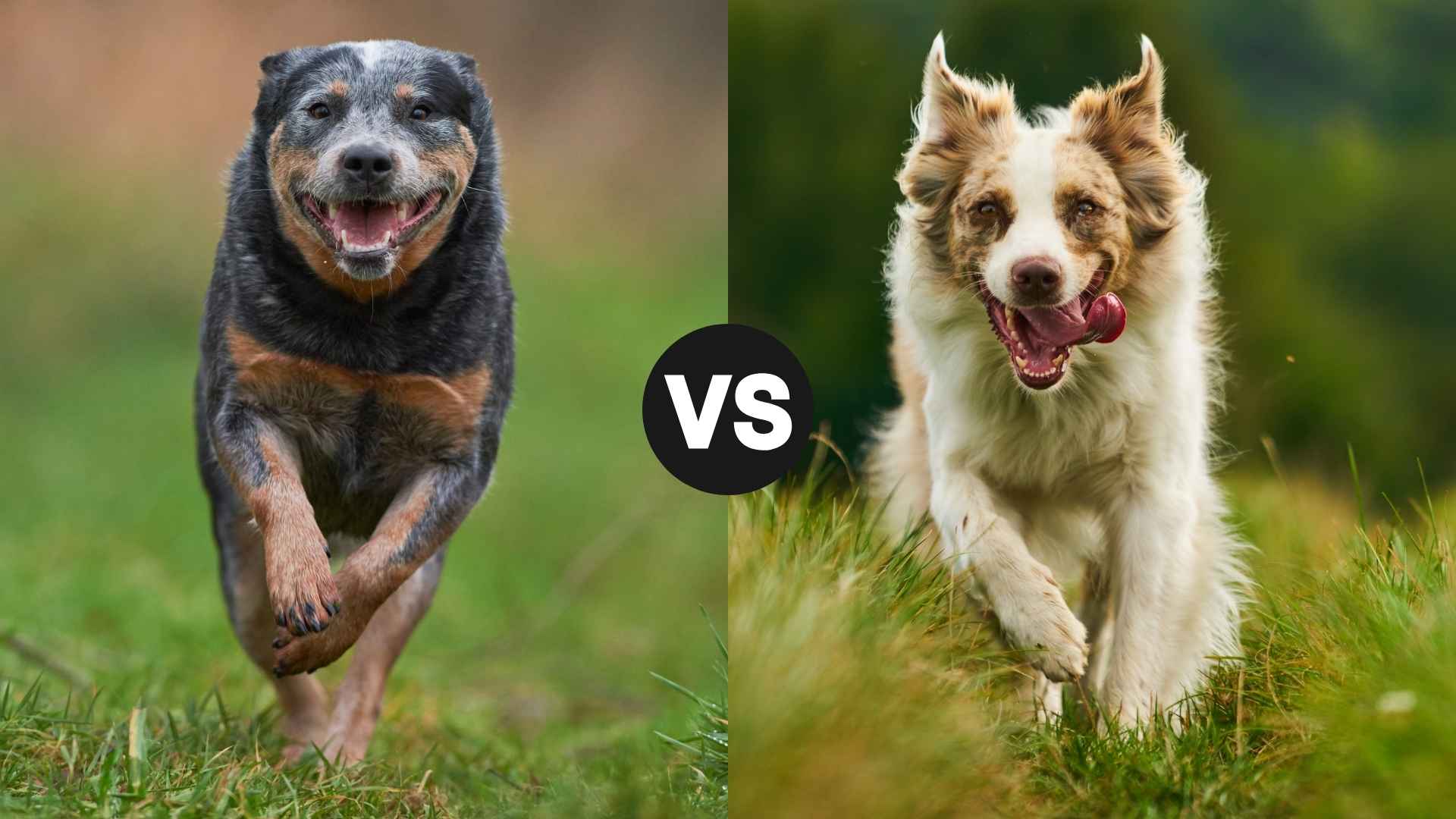What happens when two of the smartest, hardest-working dogs are compared head-to-head? You get a choice between instinct and intuition, grit and grace.
The Australian Cattle Dog and Australian Shepherd might look similar from a distance, but they were built with different goals in mind. One was bred to think on its own, chase stubborn cattle, and work all day without stopping.
The other was shaped to read people, adjust quickly, and keep moving with elegance and speed. So which one fits your life? Are you after raw endurance or emotional sharpness? Independence or constant teamwork? The differences matter more than people think.
In this article, you’ll see how the Australian Cattle Dog and Australian Shepherd match up in behavior, size, coat care, training style, and life with a family or on the trail.
Australian Cattle Dog vs. Australian Shepherd
Australian Cattle Dog vs. Australian Shepherd: Physical Size and Build
The Australian Cattle Dog stands out for its dense, muscular frame, built for stamina and control. Its body stays low to the ground, supporting tight turns and sudden movement. Every part of its build supports a work-first purpose rooted in cattle management.
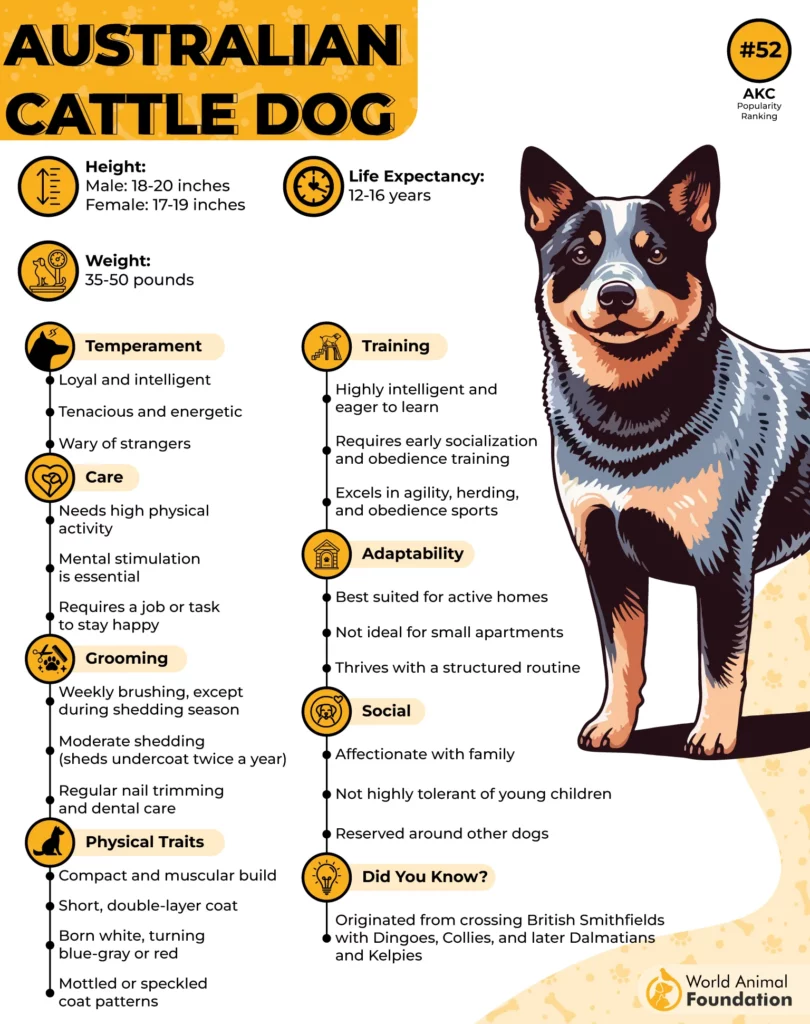
Balanced Agility in the Shepherd
Australian Shepherds carry a taller, leaner structure with longer limbs and a more fluid gait. Their movement stretches across a wider space, lending itself to directional work over large pastures. The body type reflects a more expansive style of control in the field.
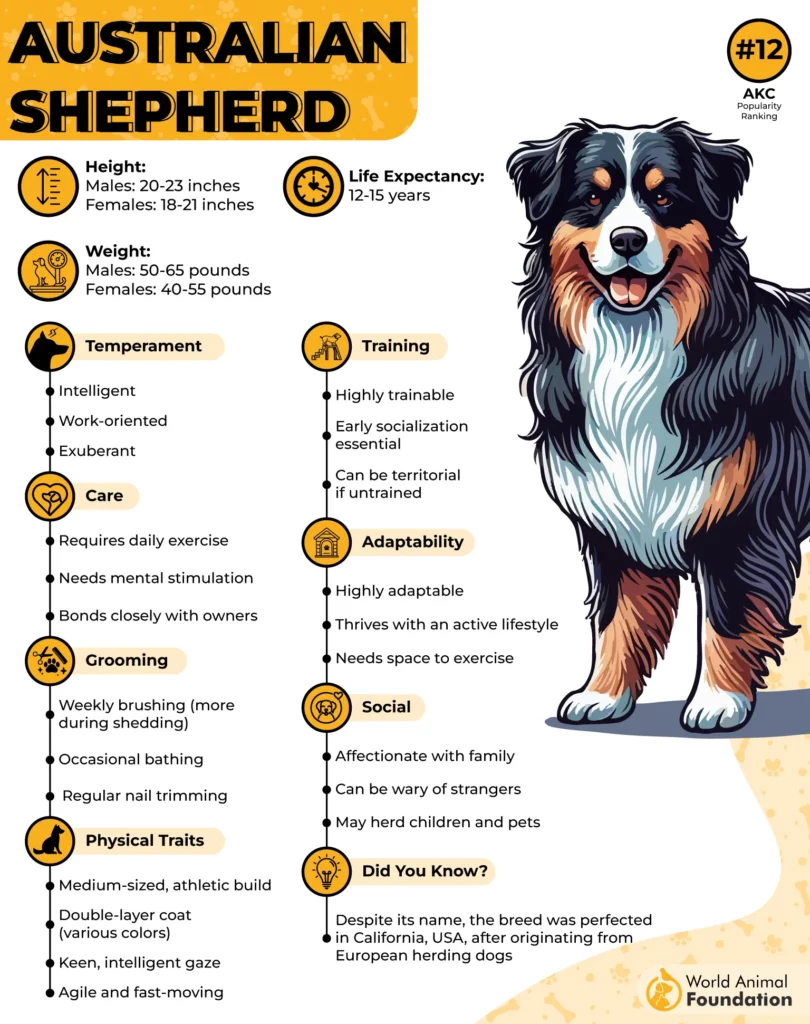
Movement Style and Muscle Efficiency
The Cattle Dog’s motion is taut, deliberate, and close to the terrain—it conserves energy even while working intensely. This tight kinetic control benefits handlers needing responsive management in close quarters. Its compact muscle system delivers torque where precision matters.
What Build Means in the Field
Among herding dog breeds, few demonstrate such specialized adaptation in form and function. The blue heeler, especially, is structured for head-level work with livestock. In broader comparisons of dog breeds, build often reveals how each one handles pressure and physical demand.
Australian Cattle Dog vs. Australian Shepherd: Coat Type and Texture
The Australian Cattle Dog’s double coat is short, flat, and lies tight against the body, as per Dogs Australia. It resists rain and debris, is built to handle rough terrain, and variable weather. The undercoat is dense and insulating, especially important in cooler climates during extended herding.
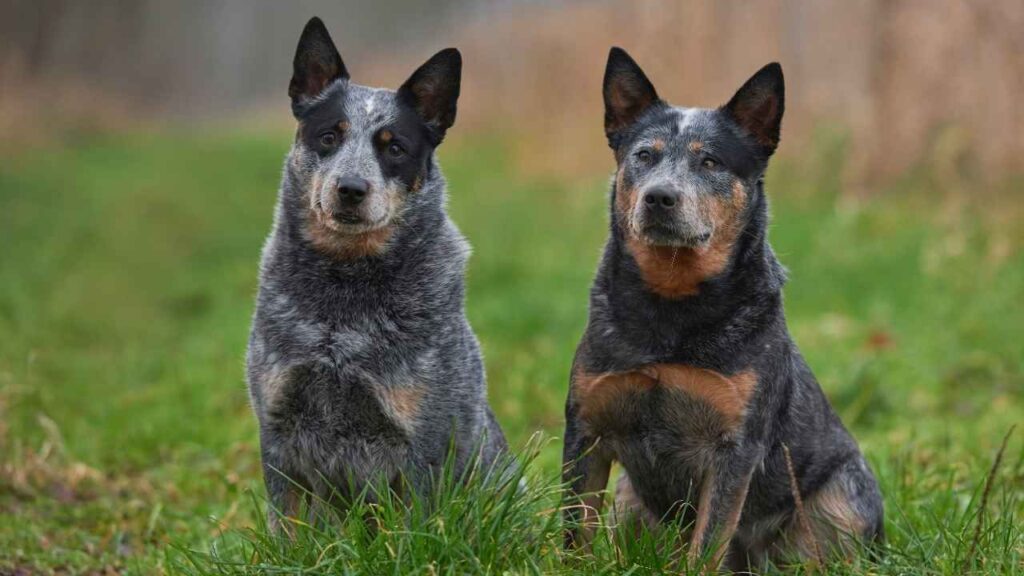
Medium-Length and Feathered in the Shepherd
Australian Shepherds have a moderately long coat with a distinct feathering along the chest and hindquarters, as stated in the UKC. The outer layer is slightly wavy or straight, with a soft, insulating undercoat beneath. Seasonal shedding can be intense, requiring more maintenance during spring and fall.
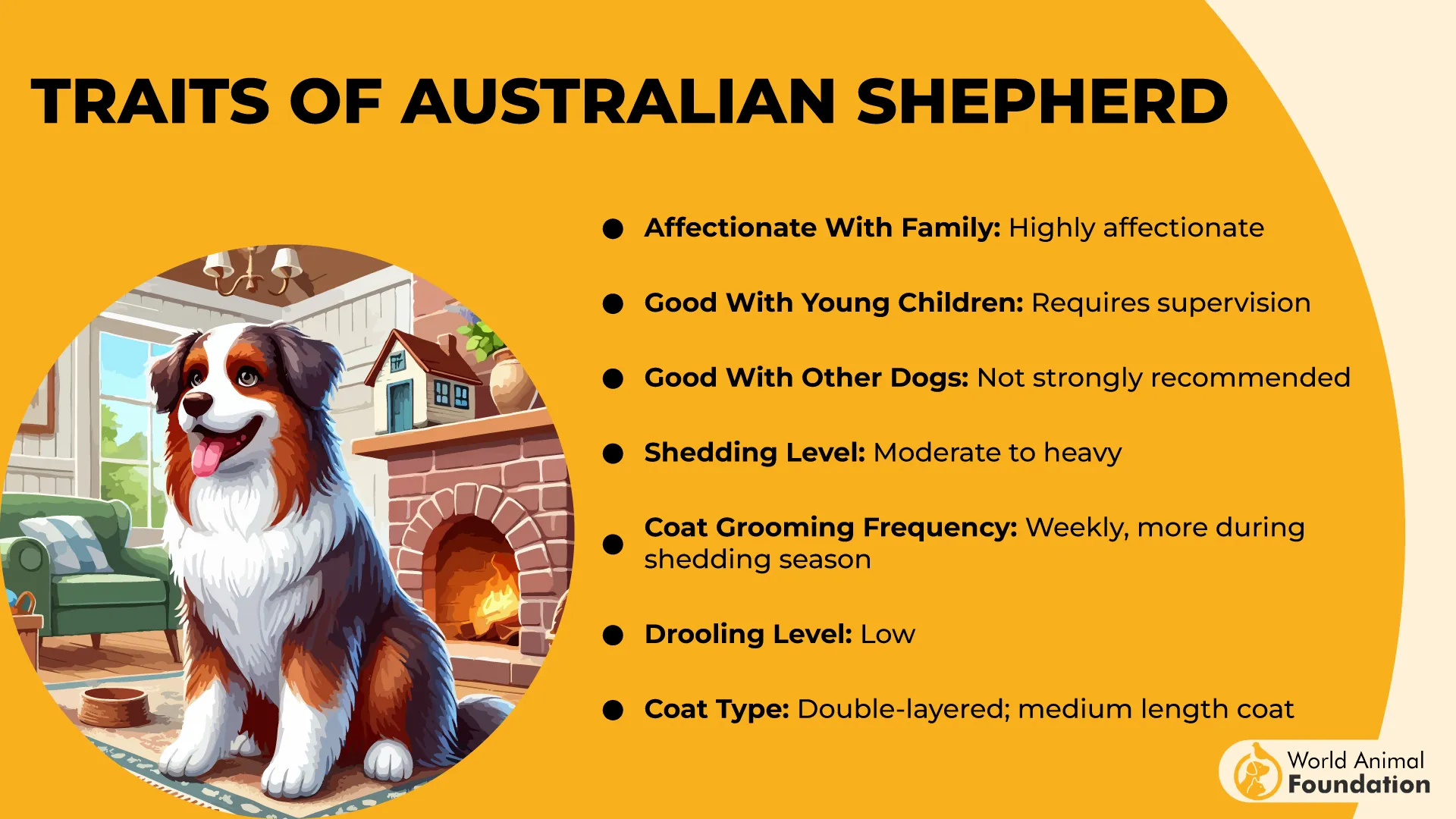
Texture and Functionality Differences
The Shepherd’s coat is more prone to tangling and requires weekly brushing to avoid matting. In contrast, the Cattle Dog’s tighter coat rarely traps dirt or burrs, needing far less grooming effort. Their coats evolved based on the work environments they were bred to handle.
Coat Behavior in Work Conditions
Australian Shepherds may struggle in high heat due to the heavier texture of their outer coat. Cattle Dogs, with their low-maintenance coat, perform well in both heat and cold when acclimated. This directly affects endurance during long herding tasks in unpredictable weather.
Australian Cattle Dog vs Australian Shepherd: Personality and Behavioral Traits
The Australian Cattle Dog is intensely task-driven, with a sharp problem-solving instinct that surfaces even in downtime. It demands purpose throughout the day—without mental engagement, it may default to disruptive behaviors. Quick to react, it works best with firm, consistent leadership.

Sociability and Sensitivity in the Shepherd
The Australian Shepherd is more people-oriented and emotionally attuned, often forming tight bonds with its handler. It picks up on tone and gesture faster than most herding breeds, making it suitable for roles where interpretation matters. Social exposure early on enhances its stability around change.
Discipline and Response to Direction
Both of these breeds excel under structured obedience training, though their motivations differ. The Cattle Dog responds to direction through habit-building, while the Shepherd favors relational cues and body language. Without proper training, both can show pushback or over-control tendencies.
Family Compatibility and Interaction
Australian Shepherds often transition into lovely family pets when routines are stimulating and interactive. The Cattle Dog, while more intense, can be a good family pet with firm boundaries. Both are selective with other dogs, and the Cattle Dog occasionally shows guard dog behavior if not socialized thoroughly.
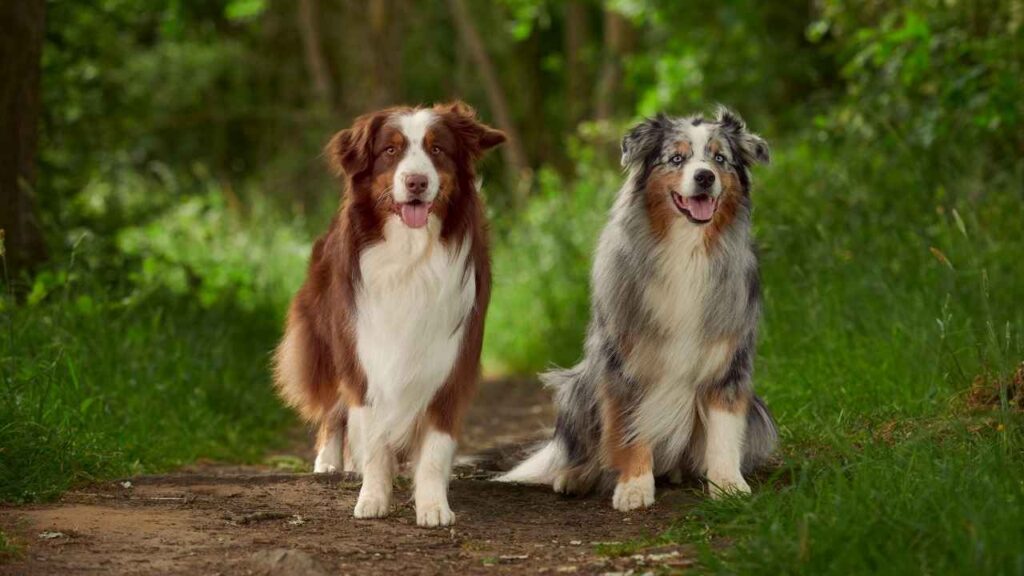
Australian Cattle Dog vs. Australian Shepherd: Common Health Conditions
Australian Cattle Dogs show a higher risk for progressive retinal atrophy and occasional deafness tied to pigmentation. Screening for hip dysplasia is recommended, especially in working-line dogs with heavy daily impact. Early mobility checks help identify signs before they limit performance.
Sensory Risks in Shepherds
Australian Shepherds often carry the MDR1 gene mutation, making them sensitive to common medications, as per PetMD. Epilepsy and eye disorders, including cataracts, are also noted in medical records. Regular vision and neurological evaluations are part of long-term care planning.
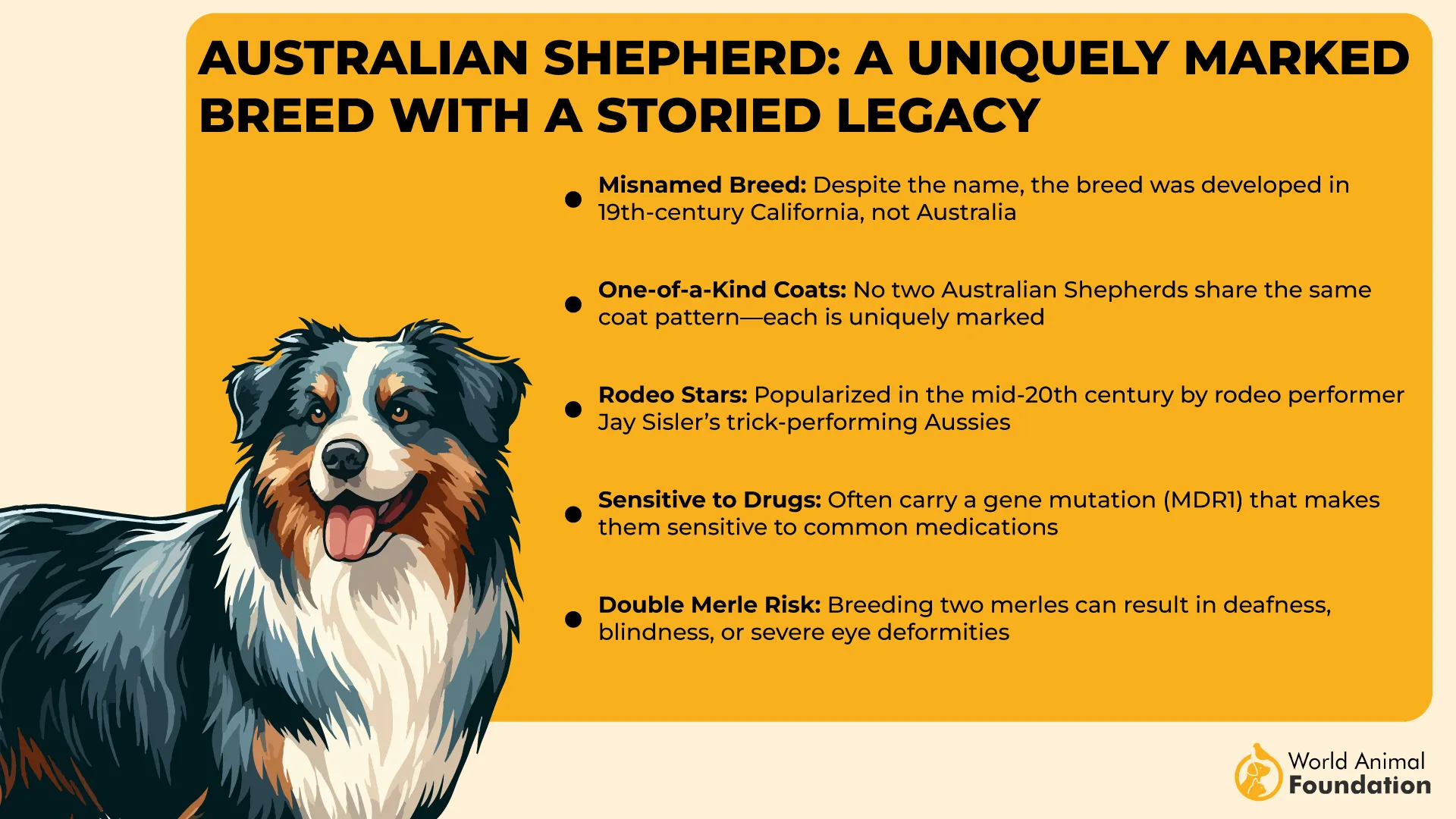
Inherited Risks Across Lines
Though both fall under herding types, their health risks don’t fully mirror each other, even if they seem like the same breed at a glance. Breeding history affects what shows up generation to generation. Responsible practices are essential to avoid compounding defects.
Health Needs for Active Dogs
As high-energy dogs, they demand more than movement—they require joint care, nutrient timing, and steady mental stimulation. For any dog owner, especially those choosing purebred dogs, vet familiarity with these breeds is key to catching breed-specific red flags.
Australian Cattle Dog vs. Australian Shepherd: Average Lifespan
Australian Cattle Dogs have one of the longest median lifespans among working breeds, often reaching 15 years. Studies report consistent health well into senior years, provided weight and joint stress are monitored. Early arthritis can be a concern when physical wear isn’t balanced.
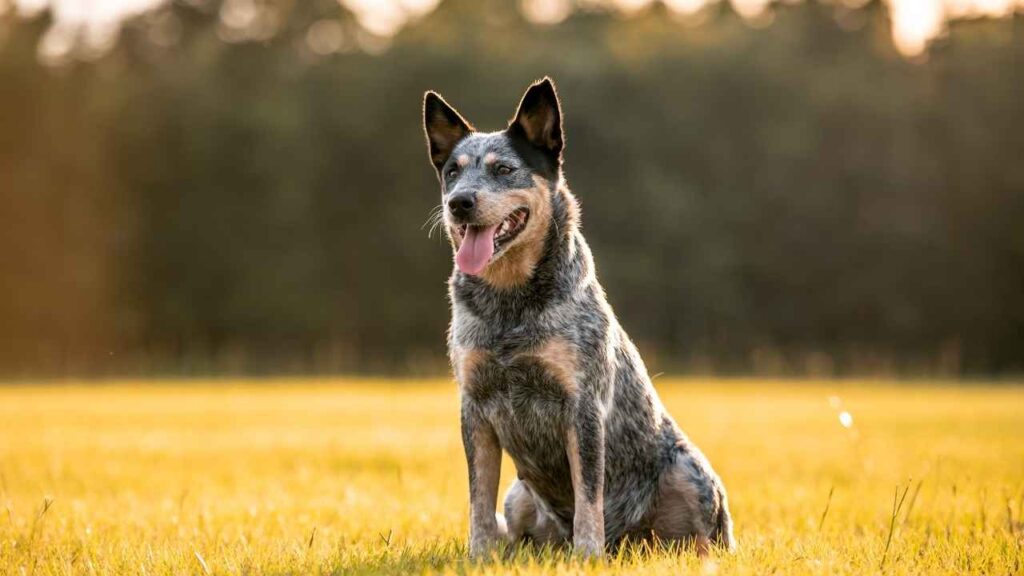
Lifespan Trends in the Shepherd
Australian Shepherds generally live between 12 to 15 years, but they are more prone to genetic conditions affecting organs and vision. Conditions like epilepsy and MDR1 sensitivity can affect quality of life over time. Regular screenings from an early age can help in managing these risks.
What Influences Overall Longevity
Nutrition, controlled exercise, and routine veterinary care contribute significantly to both breeds’ longevity. However, the Cattle Dog’s lower risk profile for congenital issues often gives it an edge. Breed-specific care routines are vital for maximizing lifespan and performance.
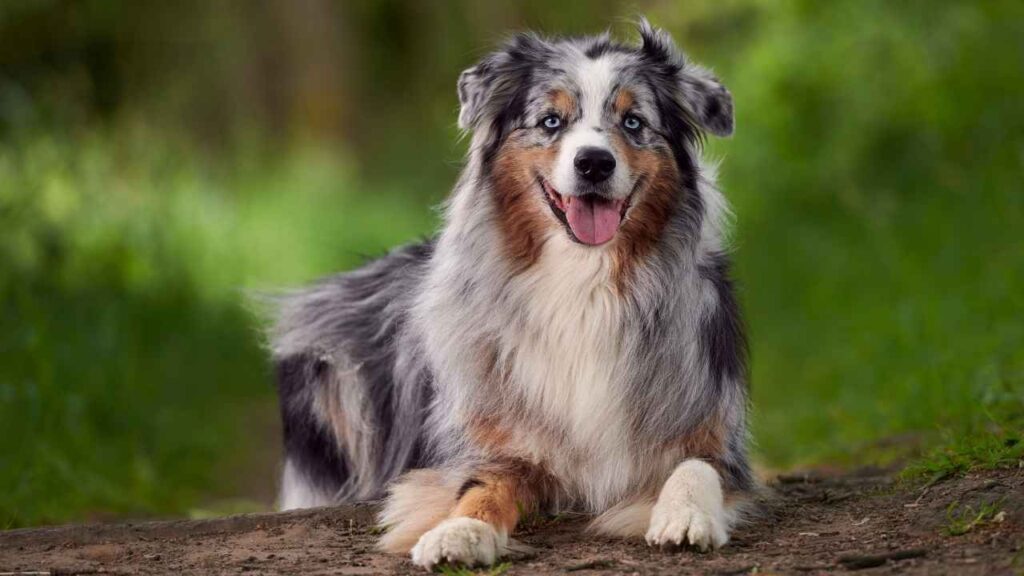
The Role of Routines and Environments
Stable environments, structured exercise, and early socialization build resilience that supports health into later years. These high-energy breeds need consistent outlets to avoid stress-linked health decline. Their integration into family life also reinforces behavioral stability over time.
Conclusion
Choosing between these two breeds means looking beyond the surface. While both shine in agility training and active homes, their instincts and personalities run in different directions.
The Australian Cattle Dog thrives with structure and purpose. The Australian Shepherd prefers teamwork and flexibility. According to the American Kennel Club, both rank high in intelligence and work ethic.
With consistent grooming, proper training, and a healthy lifestyle, either can become a deeply rewarding companion. But matching a dog’s energy to your own matters.
Whether you want a watchdog with grit or a family dog with charm, one thing’s clear—both make a good dog for the right kind of owner.


